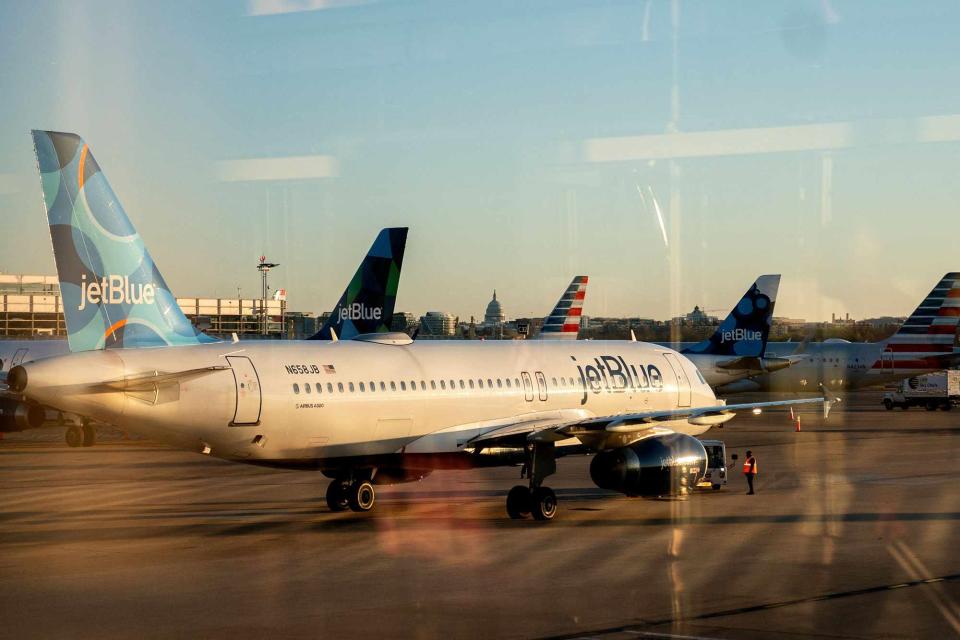Why You Should Check the Plane Model Before You Book Your Next Flight
Carry-on travelers, this is for you.

Stefani Reynolds/AFP via Getty Images
Preparing for a big trip? Then it’s time to do a little homework.
Sure, you likely already know where you want to go, what hotel you want to stay in, and which time of year you’d like to visit, and you may have even looked into flight options. But, before you book, you should check out the plane model and layout so you can find the perfect seat.
Why is this extra step important? An airline’s cabin layouts and seats can vary even within the same class from plane to plane, and that means the in-flight experience can vary, too. Different plane models offer varying in-seat amenities and different sizing for overhead compartments and underseat storage. This is critical for die-hard carry-on-only travelers. You may have purchased a carry-on-sized bag, but that does not mean it will fit inside all overhead bins — and if it doesn’t, it could get gate checked.
Perhaps most importantly, different airplane models offer varying seat pitches which means the amount of legroom can vary, even in economy class. And in-flight entertainment options can differ, too, so you’ll want to see what your plane has on board — and download movies, podcasts, or TV shows before you go to avoid hours of boredom.
Related: 16 Mistakes Every First-time Flier Makes
There are several ways to check which airplane model you could be flying. The most straightforward way to check is by looking at your chosen airline’s reservation page. Most airlines list the aircraft type on their ticketing pages, so you’ll know before you even book.
But, if you can’t find it on the airline’s website, you can look to third-party sites like Expert Flyer or SeatGuru.
SeatGuru allows users to pop in their travel date and flight number (or their travel date, origin airport, and destination), and it will spit out a seat map of the flight. On the left column of the page, you’ll see helpful information, including the aircraft type, the airline’s baggage policies, information on traveling with children, and the airline’s check-in policy.
On the right column, you’ll find information on the plane’s seat configurations, width, and pitch divided by class of service. Travelers can also find information on in-seat amenities like headphone jacks, power adaptors, Wi-Fi, and food offerings. The maps on SeatGuru even list the best (in green) and worst (in red) seats on the aircraft to help all travelers make informed decisions. For example, on a Delta flight between Atlanta and New York City on an Airbus A321 (layout 2), SeatGuru suggests avoiding window seats A and F in row 12. As it notes, the seats may be in the airline’s Comfort+ area, but because they are located in front of the emergency exit row, they may “have limited recline” and do not have an actual window view.
Expert Flyer offers much of the same information with a big bonus: Travelers can set up email alerts for when their favorite flights and seats become available. Use both sites to become more informed so you can start your vacation on the best foot — right from takeoff.
For more Travel & Leisure news, make sure to sign up for our newsletter!
Read the original article on Travel & Leisure.

